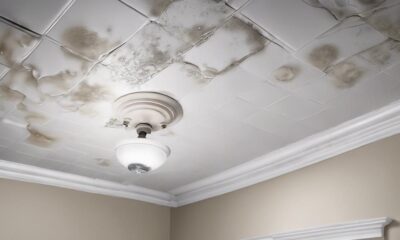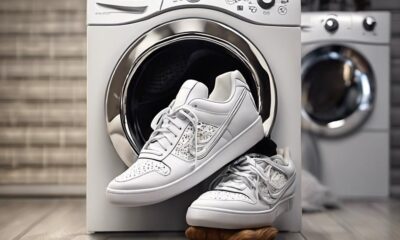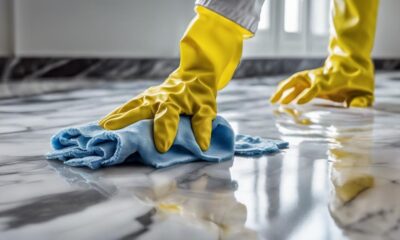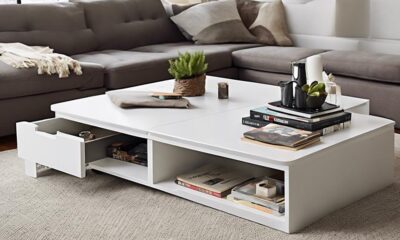Beginners Guides
Does the Number of Blades on a Ceiling Fan Matter

Have you ever thought about whether the number of blades on a ceiling fan actually affects its performance? As we delve into this subject, we will reveal the scientific principles behind airflow dynamics and how blade design can impact cooling efficiency.
While many factors come into play, the number of blades on a ceiling fan is a crucial element that holds significance in the realm of air circulation. Let's delve into the intriguing world of ceiling fan mechanics and discover the surprising implications that blade count can have on your comfort and energy usage.
Key Takeaways
- Improved aerodynamics of ceiling fan blades enhance airflow efficiency.
- Blade number affects the distribution of air in a room.
- Blade material significantly affects performance and durability.
- Fans with fewer blades consume less energy.
Aerodynamics and Airflow Efficiency
Improving the aerodynamics of ceiling fan blades enhances their airflow efficiency, resulting in better circulation and increased comfort in the room.
When considering blade material, it's crucial to prioritize both durability and weight. The material used affects the fan's noise level, as lighter materials can reduce the noise generated during operation. For example, blades made from high-quality wood or composite materials offer both strength and reduced weight, contributing to quieter operation.
Additionally, the shape and angle of the blades significantly impact airflow efficiency. A well-designed blade can minimize air resistance, allowing for smoother and quieter operation.
Understanding the relationship between blade material and noise level is key to selecting a ceiling fan that not only optimizes airflow but also operates quietly.
Impact of Blade Number on Cooling
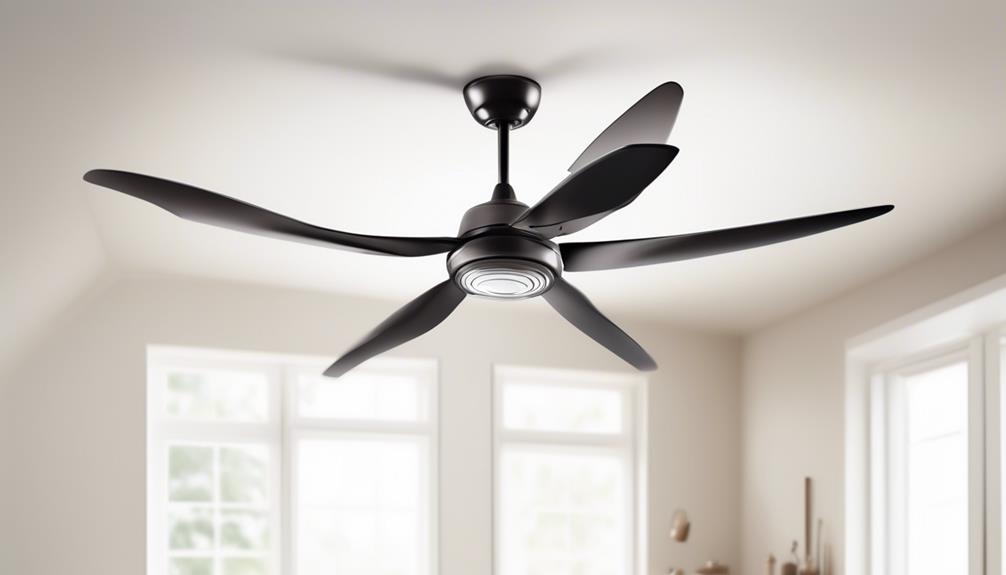
Considering the aerodynamics and airflow efficiency discussed previously, the impact of blade number on cooling is a significant factor to explore in ceiling fan design. The number of blades affects the distribution of air in a room, which in turn influences the cooling effect.
Fans with fewer blades generally produce a more concentrated airflow, creating a stronger breeze directly beneath the fan. On the other hand, fans with more blades tend to distribute air more evenly across a larger area, providing a gentler breeze throughout the room.
The choice of blade material also plays a role in cooling. Lightweight and aerodynamically designed blades can enhance the fan's efficiency by reducing air resistance and increasing airflow.
Additionally, the energy consumption of a fan is influenced by the number of blades. Fans with fewer blades may require less energy to operate due to reduced air resistance, while fans with more blades might need slightly more power to maintain efficient airflow distribution.
As such, understanding the impact of blade number on cooling, alongside blade material and energy consumption, is crucial for optimizing ceiling fan performance.
Considerations for Blade Design
When designing ceiling fan blades, we prioritize aerodynamic efficiency and material selection to enhance overall performance. The blade material significantly impacts the fan's effectiveness and noise level. Here are some key considerations for blade design:
- Aerodynamic Shape: We focus on designing blades with an aerodynamic profile to reduce air resistance and improve airflow efficiency, ultimately enhancing the fan's performance.
- Material Selection: The choice of blade material is crucial. We consider materials like wood, metal, or composite materials, each with its unique properties affecting not only the fan's efficiency but also its noise level.
- Balancing Weight and Strength: Achieving the right balance between the weight and strength of the blades is essential. This balance ensures optimal performance while minimizing noise generation.
- Surface Finish: The surface finish of the blades is carefully considered to reduce air resistance and noise. Smooth finishes can contribute to quieter operation by minimizing air turbulence.
Careful attention to these blade design considerations is essential for maximizing the performance and minimizing the noise level of ceiling fans, providing an optimal cooling experience.
Motor Power and Blade Performance
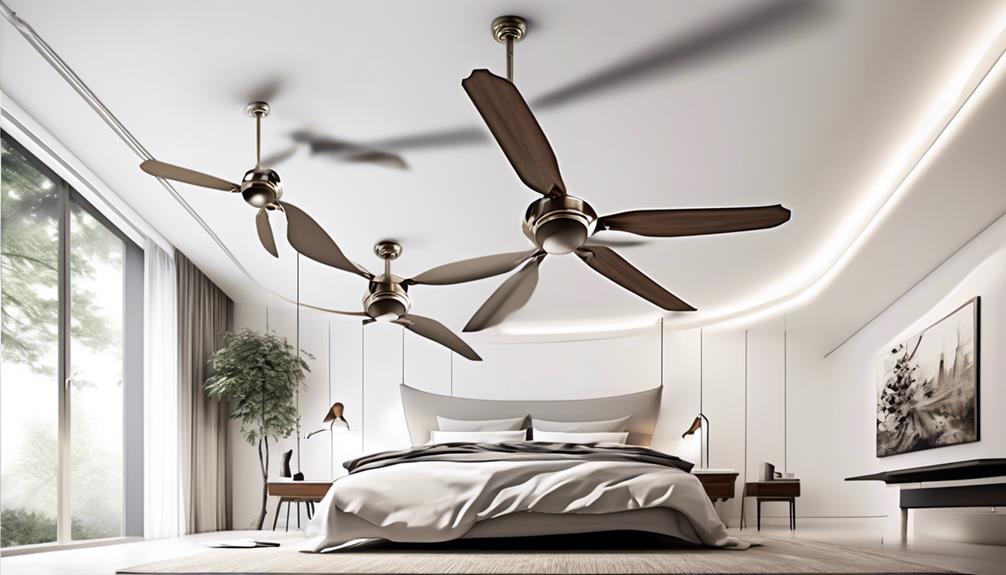
To optimize blade performance, we prioritize selecting motor power that complements the aerodynamic design and material composition of the ceiling fan blades. The motor efficiency directly impacts the fan's ability to generate the necessary airflow, and this is influenced by the blade design and material properties. When choosing a ceiling fan, it's essential to consider the motor power in relation to the blade features to ensure optimal performance.
| Motor Power (Watts) | Blade Material | Blade Design | Performance Rating |
|---|---|---|---|
| 60 | Wood | Curved | Excellent |
| 75 | Metal | Straight | Good |
| 90 | Plastic | Angled | Fair |
| 55 | Composite | S-shaped | Excellent |
| 70 | Bamboo | Reversible | Good |
The table above illustrates the relationship between motor power, blade material, design, and the corresponding performance rating. As seen in the table, the motor power must align with the blade material and design to achieve the desired performance. Factors such as motor efficiency and blade material properties play a crucial role in determining the overall effectiveness of a ceiling fan. By considering these elements, one can select a ceiling fan that offers optimal performance based on individual preferences and requirements.
Practical Implications for Blade Count
Exploring the practical implications of different blade counts allows us to understand their direct impact on airflow and overall performance.
When it comes to ceiling fan blade count, several practical implications should be considered:
- Airflow Efficiency: A fan with fewer blades tends to move air more efficiently, making it a suitable choice for larger rooms or spaces where powerful airflow is required.
- Energy Consumption: Fans with fewer blades often consume less energy, making them more cost-effective and eco-friendly in the long run.
- Blade Material: The choice of blade material can significantly affect the performance and durability of the fan. Lighter materials can contribute to better efficiency and reduced strain on the motor.
- Noise Levels: The number of blades can impact the noise levels produced by the fan. Fans with fewer blades generally operate more quietly, providing a more peaceful environment.
Considering these practical implications can help in making an informed decision when choosing the right ceiling fan with the most suitable blade count for specific needs.
Frequently Asked Questions
Are Ceiling Fans With More Blades Always Better at Circulating Air Than Those With Fewer Blades?
In our quest for airflow efficiency, blade count becomes a key factor. While it's commonly believed that more blades always mean better performance, the reality is more nuanced.
Blade design and performance play a significant role too. The number of blades can impact airflow, but it's not the sole determinant of a fan's effectiveness.
Understanding the interplay between blade count and design is crucial for optimizing a ceiling fan's performance.
Do Ceiling Fans With a Higher Number of Blades Consume More Energy Than Those With Fewer Blades?
In our investigation of energy efficiency and blade design, we've found that the number of blades on a ceiling fan can impact its energy consumption. Fans with more blades may require more power to operate, as they create greater air resistance.
However, this isn't always the case, as advancements in motor and blade technology have improved the efficiency of fans with higher blade counts.
Understanding the interplay between blade number and energy usage is essential for selecting the most efficient ceiling fan.
Are There Any Safety Concerns Associated With Ceiling Fans With a Higher Number of Blades?
When it comes to safety concerns, ceiling fans with a higher number of blades don't necessarily pose a greater risk. However, it's important to ensure that the fan is installed securely and that the blades are properly balanced to prevent any wobbling or potential hazards.
In terms of air circulation, more blades can enhance the fan's effectiveness, but it's also influenced by factors like blade pitch and motor power.
Can the Number of Blades on a Ceiling Fan Affect Its Noise Level?
Absolutely!
The number of blades on a ceiling fan can significantly impact its noise level. Research indicates that fans with fewer blades tend to generate less noise due to their sleeker blade design.
This is an essential factor to consider, especially for those seeking a noiseless environment. Understanding the relationship between blade count and noise level can help us make informed decisions when selecting ceiling fans for our spaces.
Are There Any Aesthetic Considerations to Keep in Mind When Choosing a Ceiling Fan Based on the Number of Blades?
When choosing a ceiling fan based on the number of blades, aesthetic appeal and design options are key considerations.
The number of blades can impact the overall look and style of the fan, so it's important to consider the visual impact it will have in the space.
Different blade counts can offer varied design options, allowing for customization based on the desired aesthetic.
Does the Number of Blades on a Ceiling Fan Affect Its Stability and Durability?
The number of blades on a ceiling fan does not necessarily affect its stability and durability. However, the quality of the material and the overall construction are crucial factors. To ensure stability, regular maintenance and fixing drooping ceiling fan blades should be done promptly to prevent any potential safety hazards.
Conclusion
In conclusion, the number of blades on a ceiling fan does matter when it comes to airflow efficiency and cooling. Research shows that ceiling fans with 3 or 4 blades are actually more efficient at moving air than those with 5 or more blades.
So, when choosing a ceiling fan, consider the blade count and design to ensure optimal performance and comfort in your space.
- About the Author
- Latest Posts
Introducing Ron, the home decor aficionado at ByRetreat, whose passion for creating beautiful and inviting spaces is at the heart of his work. With his deep knowledge of home decor and his innate sense of style, Ron brings a wealth of expertise and a keen eye for detail to the ByRetreat team.
Ron’s love for home decor goes beyond aesthetics; he understands that our surroundings play a significant role in our overall well-being and productivity. With this in mind, Ron is dedicated to transforming remote workspaces into havens of comfort, functionality, and beauty.
Beginners Guides
Tips for Painting a Couch

Here are some crucial pointers, whether you are painting a sofa or altering its color. It is essential to utilize only high-quality paint. Paint composed of low-quality materials will not yield the same results and will likely crack once dried. For upholstery, it is recommended to use fabric paint for optimal results. This will provide a seamless finish without making the sofa feel stiff.

Chalk paint on a couch
Before applying chalk paint on a couch, it is important to prepare the surface. To remove paint, use Goo Gone and wash the surface with warm water. Dry the piece completely. Lightly sand any areas that are rough with 220 grit paper. The entire couch doesn’t have to be sanded.
After you have prepared the surface you can paint the couch. A spray bottle or a brush are the best tools for applying the paint. This will allow the paint to penetrate fabric fibers. Even after multiple coats, it will last for years. To reach into buttons and crevices, you can use a paintbrush. Between coats, let the fabric dry completely. To protect your couch, apply a clear wax.
Oil-based paint
If you are looking for a long-lasting finish, oil-based paint is the best choice. It adheres to most surfaces and leaves a rich, lacquer-like appearance. This is the best option for high-traffic areas like a couch. You can also get this type of paint in flat, satin, or glossy finishes.
Before you start painting, be sure to understand the differences between oil and water-based paints. Water-based paint won’t stick well to oil-based paintings. Use rubbing alcohol to test the paint’s adhesion. Dip a white cloth in rubbing alcohol, and rub the wall with it. Water-based paints will transfer to a clean cloth easily, while oil-based paints will not.
Use fabric paint
If you want to paint your couch using fabric paint, you will need some basic tools. To paint the upholstery with fabric paint, you will need a nylon paintbrush, a drop cloth and a paint container. To add durability and prevent the paint from peeling, you may use sealing wax. To ensure that the paint spreads evenly, you may want to dampen your fabric with plain water.
After you’ve painted your couch, allow it to dry completely before applying the second layer. You should wait no more than an hour between each coat to ensure the paint does not dry too quickly.
Sanding
These are some helpful tips for painting a couch. Preparing furniture for painting is as simple as sanding. This is essential as you will want to inspect the final product before you start. It is important that you see the finished piece before you start painting.
Sanding furniture is crucial to ensure paint adheres properly. This will ensure that your new coat of paint will adhere to the furniture with a smooth and even finish. The furniture can be sanded with either an orbital or hand sander, depending on its condition. You will need 150-grit Sandpaper for this step. You can also use sanding blocks to reach hard-to-reach places.
Use a tack cloth
You can make your own tackcloth if you don’t have enough money to purchase a professional painter’s cloth. The basic cloth should measure approximately twelve by twenty-four inches. It doesn’t matter what size you choose. Just soak it in water, then dry it. Fold it in multiple layers.
It is not difficult to choose a tackcloth, but it is essential to do your research. It is crucial to make sure that the tackcloth doesn’t leave wax residue after drying, and doesn’t bleed paint. Tack cloths are suitable for small projects but professionals might prefer them for larger surfaces.
Use milk paint to cover a couch
Milk paint is a great way to give your couch a distressed appearance. Milk paint, which is thinner than regular paint, leaves the wood grains visible. This allows you to layer and distress. This can be applied to a sofa or couch with ease.
The first coat may appear streaky. Apply another coat to even out the color. Remember that milk paint can be porous so it must be sealed. It’s easy and shouldn’t take too much time.
Oil-based paint for leather couches
Oil-based paints can stain leather couches. There are methods to clean it. First, you need to dissolve the oil in the paint with a special solvent. This should remove most of the stain. Hydrogen peroxide can also be used to remove stubborn stains.
It is harder to remove oil-based paint than water-based. It is important to remove all paint from your couch. It’s not difficult if you act quickly. Once the paint dries, it will be more difficult to remove. Most paint stains can be removed with olive oil and soap. If you have a stubborn stain you can use an edged tool.
- About the Author
- Latest Posts
Introducing Ron, the home decor aficionado at ByRetreat, whose passion for creating beautiful and inviting spaces is at the heart of his work. With his deep knowledge of home decor and his innate sense of style, Ron brings a wealth of expertise and a keen eye for detail to the ByRetreat team.
Ron’s love for home decor goes beyond aesthetics; he understands that our surroundings play a significant role in our overall well-being and productivity. With this in mind, Ron is dedicated to transforming remote workspaces into havens of comfort, functionality, and beauty.
Beginners Guides
Craft Paint Storage
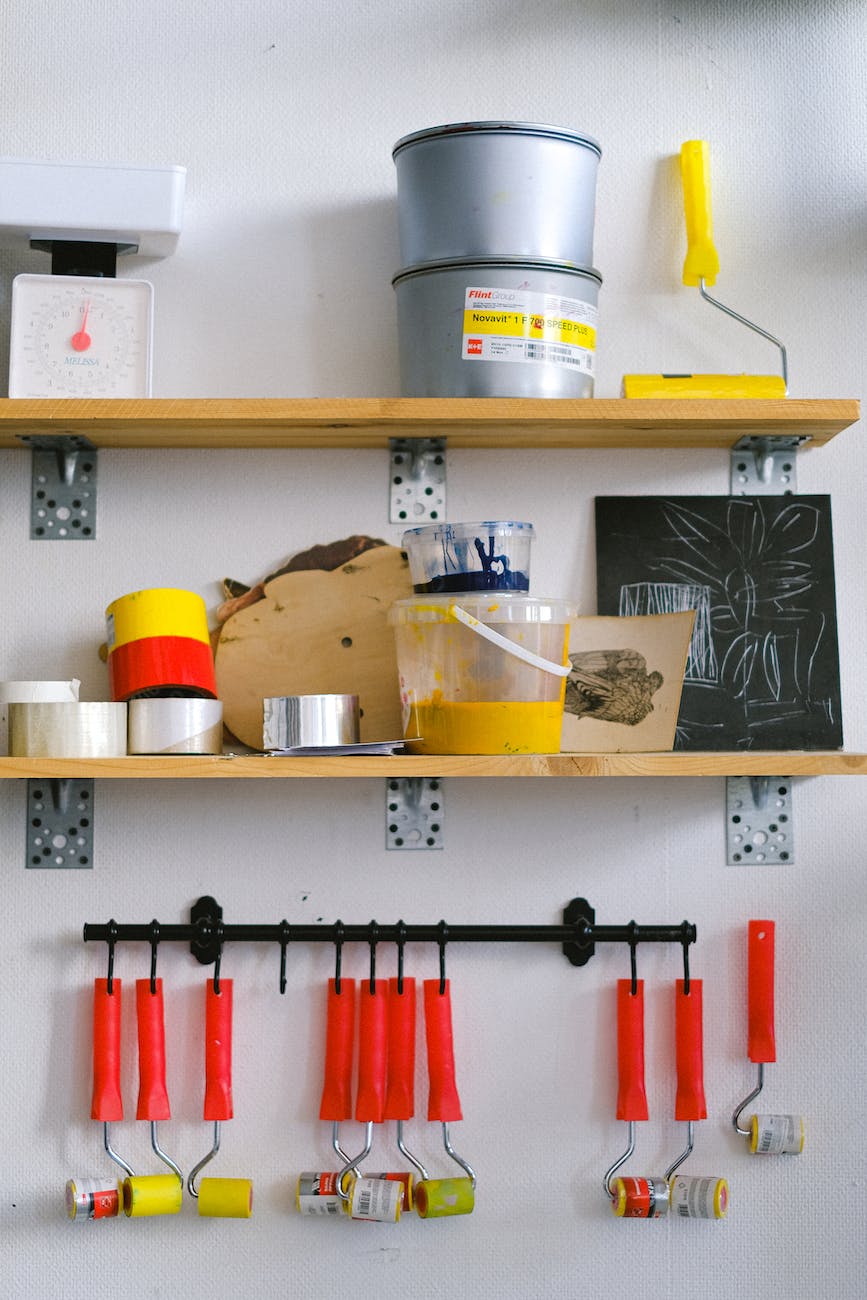
You should maintain the quality of your craft paints by storing them in a designated paint storage unit. A rotating organizer like the Craft Smart Paint Storage Spinner is an ideal choice. These units assist in organizing your paints for easy access and help in keeping them dry, which is crucial for preserving their quality.
Plydolex Army Painter
The Plydolex Army Painting Rack is a great storage solution and can store a variety of art supplies. It can store up to 74 paint bottles and 14 paint brushes. The organizer’s solid wood construction makes it durable and will last for many years. The Plydolex army painting wooden paint storage rack is a better option if you need a permanent solution to your paint and art supplies.
The right size Plydolex army paint rack is crucial. There are many sizes available so that you don’t run out paint storage space. The large holes make it easy to store larger bottles of paint, while the smaller holes can hold smaller ones.
The corner Plydolex storage rack for paint has 18 large holes to hold larger paint bottles. You can also use the fourteen smaller holes to store dropper-style paint containers. The rack’s design makes it easy to find paints and keeps them organized.
Citadel army painter
Dropper bottles are a great option for those looking to store their Citadel army colors. Dropper bottles work better than pots, and they will keep your paints from leaking, especially if your cat likes to mess up whenever he can. This paint storage solution has another advantage: It is compact. The 5mm thick PVC is light, waterproof, anti-corrosion and water-resistant. Although it is an excellent storage solution, it may not be compatible with all paints.
The Citadel paint set includes 48 pots of paint in three ranges: Shade, Layer, and Base. A sturdy plastic box holds two racks of twenty-one paints each. The lid has a handy tray that makes it easy for you to pick up and place the paints after use.
Citadel provides a paint storage system that is suitable for army painters. Modular design of the paint station allows you to store 30 different paints. The kit also comes with 7 paint brushes and a water bottle. The package also contains a painting guide. It is important to note that Citadel paint storage units may not be the only option on the market.
Citadel army paints are available in many gaming shops around the world. However, messy paints can result from pouring the paint into the pot. The paints will dry quicker if this is done. This is not recommended to paint large buildings or vehicles. This can cause more mess and dry paints faster.
- About the Author
- Latest Posts
Introducing Charles, the Editor in Chief at ByRetreat, whose passion for interior design and editorial excellence elevates every remote workspace to new heights. With his keen eye for detail, impeccable taste, and expertise in design, Charles brings a wealth of knowledge and creativity to the ByRetreat team.
As the Editor in Chief of a renowned lifestyle blog, Charles has honed his skills in curating captivating content and staying up-to-date with the latest trends in interior design. His deep understanding of aesthetics and the power of storytelling through design enables him to create remote workspaces that are not only visually stunning but also rich in personality and meaning.
Beginners Guides
How to Distress Your Kitchen Cabinets With Chalk Paint
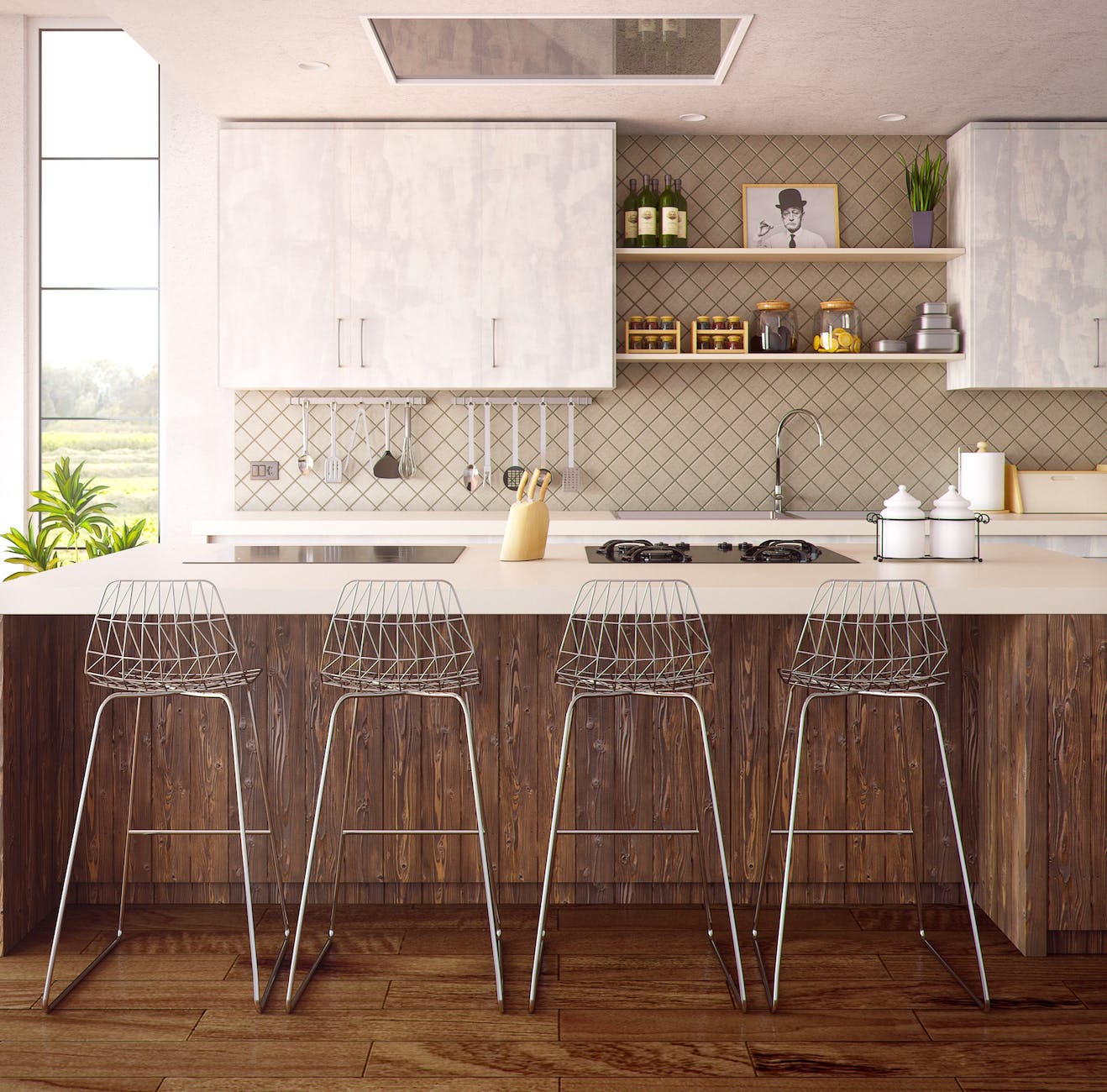
Chalk paint is the top option for achieving a distressed look on your kitchen cabinets. This environmentally-friendly, low VOC paint is simple to clean and can be applied with a sprayer or brush in a variety of colors.
You can distress your kitchen cabinets with chalk paint

You can distress your kitchen cabinets with Chalk Paint. This is a great method to update your kitchen decor. Chalk paint is a special type of flat paint that sticks to almost all surfaces. After the painting is complete, you’ll need to apply a protective coat. Varathane Water-based Top Coat Matte is an option to achieve a matte look.
Preparing your cabinets for painting is important. Wash them with soap and water before you start. If you find any areas that are not showing through, spot-priming might be required. You will need to paint two to three coats. To achieve distressed effects, you can layer more than one colour.
You can distress your kitchen cabinets using chalk paint to give them a matte finish. However, you should seal them with a protective wax. It will protect them from staining or scratching. This protects paint but needs to be maintained. Wax is not heat resistant so you may need to reapply it occasionally.
Preparation
Before you paint your kitchen cabinets with chalk paint, it is important to prepare them. The paint will dry completely in approximately two weeks. Before applying the second coat, it is important that the first coat has dried completely. You can seal the paint with a lacquer, or clear wax if you prefer a traditional mellow finish.
Clean the surface before you begin chalk paint kitchen cabinets preparation. Although you can apply the paint to almost any surface, it’s best to have a smooth one. Sand the cabinet surface before you apply the paint. Fill in any gaps. Prime any areas not covered by paint. Apply two coats or more of paint to cover the entire area. To prevent chipping, you can add a wax topcoat after the paint dries.
You may need to fill in any gouges or scratches that are deep and rough if the surface is bare. You can cover small imperfections because chalk paint is thicker and more durable than regular paint. The paint will leave a rough finish.
Dry time
It is important to understand the drying time of chalk paint before you begin to paint your kitchen cabinets. It’s likely that the first coat will be streaky, so use it as a primer before you apply the second coat.
Chalk paint can be used on kitchen cabinets easily. It is easy to transform your kitchen’s appearance without spending too much. You can select from multiple colors and apply multiple layers. To achieve a distressed look, you can also use milk paint.
You must clean your cabinets thoroughly before applying chalk paint. You can’t let the paint show through if you don’t clean your cabinets well. You can use a degreasing product to clean the cabinets. You can wipe the cabinets clean using shop cloths. Repeat this process several times.
Sealing
To ensure that chalk paint kitchen cabinets lasts a long time, it is important to seal them. You can paint your cabinets to create an elegant farmhouse appearance or practical reasons. You should sand any damaged or patched areas before applying the sealer.
To seal your cabinets, you can use wax or polycrylic. Although wax is not as durable as acrylic, it will not yellow over time. If you decide to stick with wax, you will need to apply it again every few months. If you live in an area with high traffic, polycrylic is the best choice.
To preserve the new look, seal them with clear wax or lacquer after the chalk paint has been applied. Waxes provide a warm and tactile finish. Water-based polycryics, however, are more flexible. Before applying the second coat, let the polycryics dry completely.
- About the Author
- Latest Posts
Introducing Ron, the home decor aficionado at ByRetreat, whose passion for creating beautiful and inviting spaces is at the heart of his work. With his deep knowledge of home decor and his innate sense of style, Ron brings a wealth of expertise and a keen eye for detail to the ByRetreat team.
Ron’s love for home decor goes beyond aesthetics; he understands that our surroundings play a significant role in our overall well-being and productivity. With this in mind, Ron is dedicated to transforming remote workspaces into havens of comfort, functionality, and beauty.
-
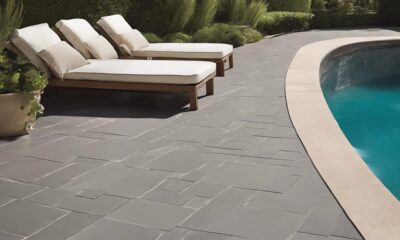
 Vetted1 hour ago
Vetted1 hour ago15 Best Tile Adhesives for Outdoor Use – Top Picks for Durable and Weather-Resistant Installations
-

 Vetted1 day ago
Vetted1 day ago15 Best Plants to Thrive on the North Side of Your House – A Gardener's Guide
-

 Vetted1 week ago
Vetted1 week ago15 Best Boxwood Varieties for Thriving in Full Sunlight
-

 Vetted2 weeks ago
Vetted2 weeks ago15 Best Ways to Label Clothes for Nursing Home Residents – Stay Organized and Efficient
-

 Decor3 days ago
Decor3 days agoAre Home Decor Stores Profitable?
-

 Vetted1 week ago
Vetted1 week ago15 Best Dryer Vent Hoses to Keep Your Laundry Room Safe and Efficient
-

 Vetted1 week ago
Vetted1 week ago14 Best Cleaners for Aluminum Surfaces – Shine Bright Like a Diamond
-

 Vetted1 week ago
Vetted1 week ago15 Best Spider Sprays to Keep Your Home Arachnid-Free












